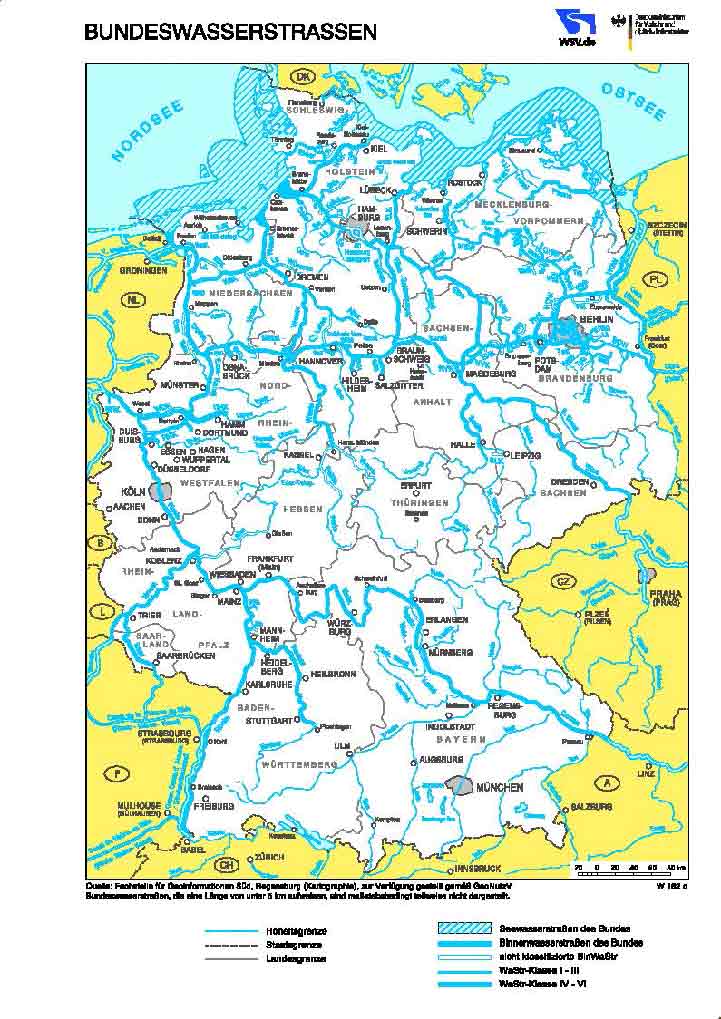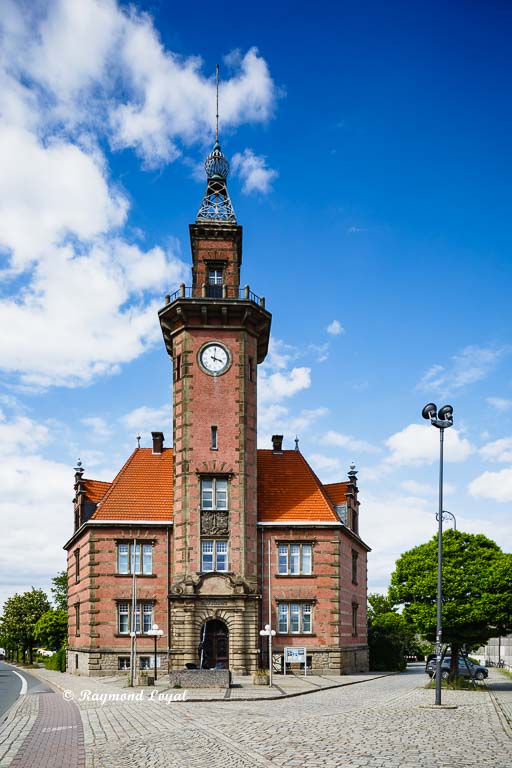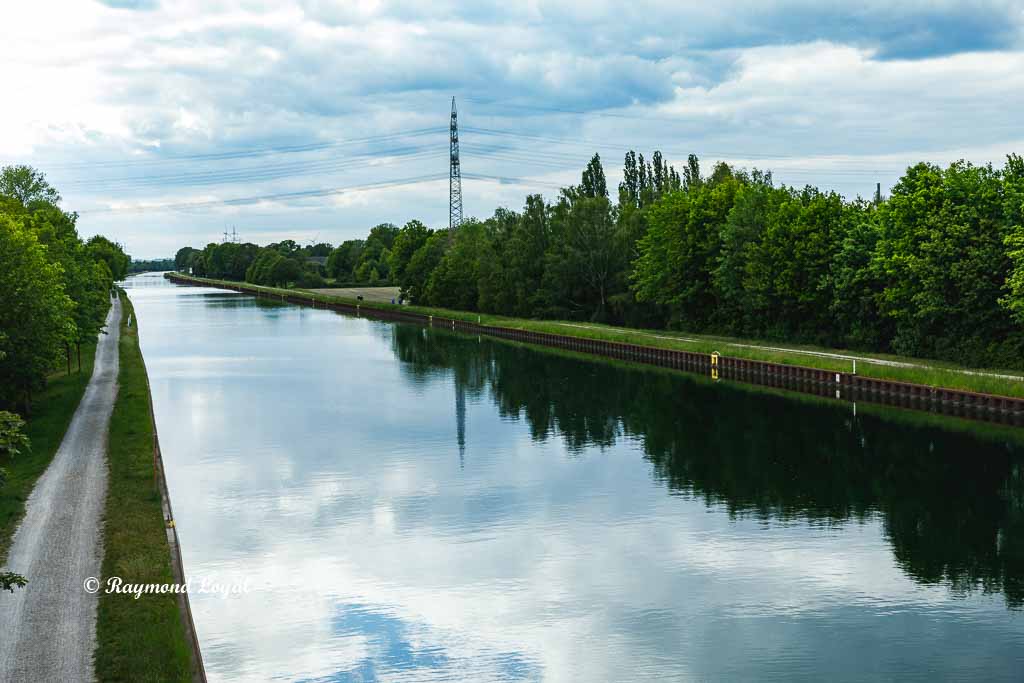Dortmund-Ems Canal (DEK)
The Dortmund-Ems Canal is one of the longest and most important inland waterways in Germany and in Europe as a whole. The canal beginns at Dortmund inland harbour and runs over a course of 225.82 kilometres through the German states of North Rhine-Westphalia and Lower Saxony (Niedersachsen) and ends at Papenburg where the canal merges with the river Ems.
The Dortmund-Ems canal connects the industrial city of Dortmund and the Ruhr area directly with the German seaports of Bremerhaven, Jade-Weser-Port and Hamburg and the ZARA ports which are Amsterdam, Rotterdam and Antwerpen and also with the Belgium seaport of Zeebrugge.
European Inland Waterways - An editorial on the Dortmund-Ems Canal with Information and Images
Site Navigation - Content
- Dortmund-Ems Canal History and Details
- Dortmund Harbour
- Container Terminal Dortmund (CTD)
- The Old Dortmund Port Authority
- Dortmund Harbour - City Harbour (Stadthafen)
- Dortmund-Ems Canal between Dortmund and Henrichenburg
- DEK - Waterways Intersection Datteln
- DEK - Münster Locks
- DEK - Bevergern Locks
- DEK - The Wet Triangle


Dortmund-Ems Canal - History and Details
Dortmund-Ems Canal was built between 1892 and 1899 in seven years only. The canal covers a route of 225.82 kilometres. One of the main reasons for building the canal and connecting the City of Dortmund to inland navigation was that Dortmund was a major playor in the steel and coal industry. The large volumes of steel and coal could no longer be managed by railway and the idea of construction a canal was born.
Because of Dattel Waterways Intersection Dortmund-Ems Canal connects not only to the German large German ports Bremerhaven, Jade-Weser-Port and Hamburg but also to the important ZARA ports in the Netherland and in Belgium (Zeebrugge, Antwerp, Rotterdam, Amsterdam).
Dortmund-Ems Canal begins at canal kilometre 0.00 at Dortmund Harbour and ends at kilometres 225.82 by merging with the river Ems.
There are 16 lock systems in the run of the canal:
- Henrichenburg Boat Lift - fall height 5.81 metres
- Waltrop Locks
- Muenster Locks - fall height 6.20 metres
- Bevergern Locks - fall height 6.36 metres
- Rodde Locks - fall height 3.80 metres
- Altenrheine Locks - fall height 3.60 metres
- Venhaus Locks - fall height 3.50 metres
- Hesselte Locks - fall height 3.36 metres
- Gleesen Locks - fall height 6.37 metres
- Hanekenfähr Locks - only in use in case of flood waters
- Varlöh Locks - fall height 3.67 metres
- Meppen Locks - fall height 7.50 metres
- Hüntel Locks - fall height 2.90 metres
- Hilter Locks - fall height 1.50 meters
- Düthe Locks - fall height 2.20 metres
- Herbrum Locks
Dortmund Harbour - Dortmund Hafen AG
A new canal for a new harbour, a harbour that had to built from scratch. Dortmund Harbout is not only the starting point for Dortmund-Ems Canal but also the larges canal port in the whole of Europe.
Grand Opening was on August 11th 1899 and also the start for Dortmund-Ems-Canal.
With the opening of Dortmund Harbour begins an unprecidented success story in Dortmund with Dortmund Harbour developing into the most important industry in Dortmund even overtaking steel and coal and still growing in the 21st century.
As a canal harbour Dortmund is the starting point of Dormund-Ems Canal and the canal is the only navigable waterways connecting Dortmund with the German ports and the ZARA ports in the west which are Zeebrugge, Antwerp, Rotterdam and Amsterdam. The next connection to other waterways is at Dattel Intersection only. Between Datteln and Dortmund sits Henrichenburg Locks, meaning which the locks going out of operation for a while would cause havoc to the harbour. Because Dortmund lies at a dead end any disturbance at Henrichenburg would cut off Dortmund clompletely from the rest of the world.
However, Dortmund also serves trimodal transpurt which is railway, road and barge. West of the port is a combined cargo terminal. Because of this tremenduous diverstity Dortmund has developed into one of the most import logistical sites in Germany.
Container Terminal Dortmund (CTD)
Assumably, everyone working or having worked in container shipping will love the terminal. We are talking Container Terminal Dortmund (CTD). The bimodal terminal, situated at Franz-Schlüter-Strasse in Dortmund, serves barges and railway traffic alike, and operates three container bridges.
Shipping goods without the use of containers has become the industries standard. As a logistical hub Dortmund connects with the German ports Hamburg, Bremerhaven, Jade-Weser Port and Bremen and also to the ZARA ports of Zeebrugge, Antwerp, Rotterdam and Amsterdam.
Pre- and on-carriage from and to Dortmund is trimodal logistics based on road, rail and barge traffic. Also, combined cargo such as barge-road and barge-rail are possible in Dortmund.
The Old Dortmund Port Authority
The old Dortmund Port Authority goes back to the end of the 19th century when Dortmund harbour was opened in 1899 and is contemporary whitness of 120 years of the city's history. Together with canal and harbour the old port authority was ceremoniously opened in the presence of Wilhelm II on August 11th 1899.
Situated is the building of the old port authority directly at Dortmund Harbour. When coming down from Sundernweg in the direction of Kanalstrasse, crossing the bridge at "Stadthafen" the tower of the old port authority can be seen from afar. The building was constructed in a neo renaissance style and is an austere beauty. Constrution started in 1898 and completed in 1899 in time for the opening of the harbour. The building was used as port authority until 1966 when the site was, meanwhile, too small for the ever growing port and the port authority moved into a new building. Nowadays the building is under monument protection and used by Dortmund water police.
Dortmund Harbour - Harbour Basin "Stadthafen" (city harbour)
The harbour basin "Stadthafen is one of the first five basins to be built at Dortmund Harbour back in the early days and was operational in 1899. Even today there are a small number of enterprises located around the basin because they still use the harbour for cargo handling. Though, this part of the harbour is no longer of high importance.
Dortmund-Ems Canal between Dortmund and Henrichenburg
The first 15 kilometres of the Dortmund-Ems Canal run in a wide arc from east to west between Dortmund Harbour and Waltrop Locks. The canal runs through an agricultural countryside; a combined foot- and cyclepath runs on both banks of the canal.
Dortmund-Ems Canal Waterways Intersection Datteln
At waterways intersection Datteln four canal systems meet: Wesel-Dattel Canal from the west ending at Dattelner Meer, the Rhein-Herne Canal from the southwest and from the east Datteln-Hamm Canal and Dortmund-Ems Canal run into the intersection. Dortmund-Ems Canal continues to the north. The intersection opens the way to the ZARA ports Zeebrugge, Antwerp, Rotterdam and Amsterdamm and to the German ports of Bremerhaven, Weser-Jade-Port, Bremen and Hamburg.
Muenster Locks - Schleuse Münster
Muenster locks were newly built and completed in 2009, with chamber 2 only being operational in 2014. Both chambers measure 190 metres in length and 12.50 metres across.
Fall hight is at 6.20 metres. With both chambers working a locking requires 8,000 m³ water, when only one chamber is in operation a locking requires 15,500 m³ of water. A locking process takes about 25 minutes.
Maximum permissable draft for a ship is at 2.50 metres.
Address:
Schleuse Münster
Schiffahrter Damm 192
48145 Münster
Canal kilometre 71.50
Operating Times:
apart from special operating times during bank holidays:
Monday to Sunday 0600h - 2400h
Responsible:
Waterways and Shipping Authority Rheine (Wasserstrassen und Schifffahrtsamt Rheine)
Bevergern Locks - Schleuse Bevergern
Bevergern locks was built in 1916, thereby replacing the old locks from 1899 which, at only 67 metres of length, had become too small for barges. The new locks mearsures 163 metres in length but only 10 metres across. Situated is the locks at canal kilometes 109.43. Fall height is at 8.10 metres, maximum permissable draft for ships is at 2.70 metres.
A locking process takes about 25 minutes. The locks are unmanned and are electronically handled by the control room at Bergeshövede.
Address:
Schleuse Bevergern
Westfalenstrasse 68
48477 Hörstel
Canal kilometre 109.40
Operating Times:
apart from special operating times during bank holidays:
Monday to Sunday 0600h - 2400h
Responsible:
Waterways and Shipping Authority Rheine (Wasserstrassen und Schifffahrtsamt Rheine)
The Wet Triangle
The "Wet Triangle" we are talking about is far from being a geometrical form but describes one of the triangles where waterways cross. Triangle as a term is closely associated with the German word "Autobahndreieck" or in English Motorway Junction. Our so-called Wet Triangle is the area in Tecklenburger Land where Midland Canal branches off Dortmund-Ems Canal shortly after the township of Bergeshövede. In other words this is where Midland Canal starts. Also, the wet triangle is a berthing place for barges waiting to move into Bevergern Locks. At the Wet Triangle the Dortmund-Ems Canal runs in a east-west direction, whereas Midland Canal starts in a northern direction.
Apart from being a major transport, the wet triangle is also a highly frequented recreational area, especially during weekends and and everyday, weather permitting.
Find some images of the place below.












































